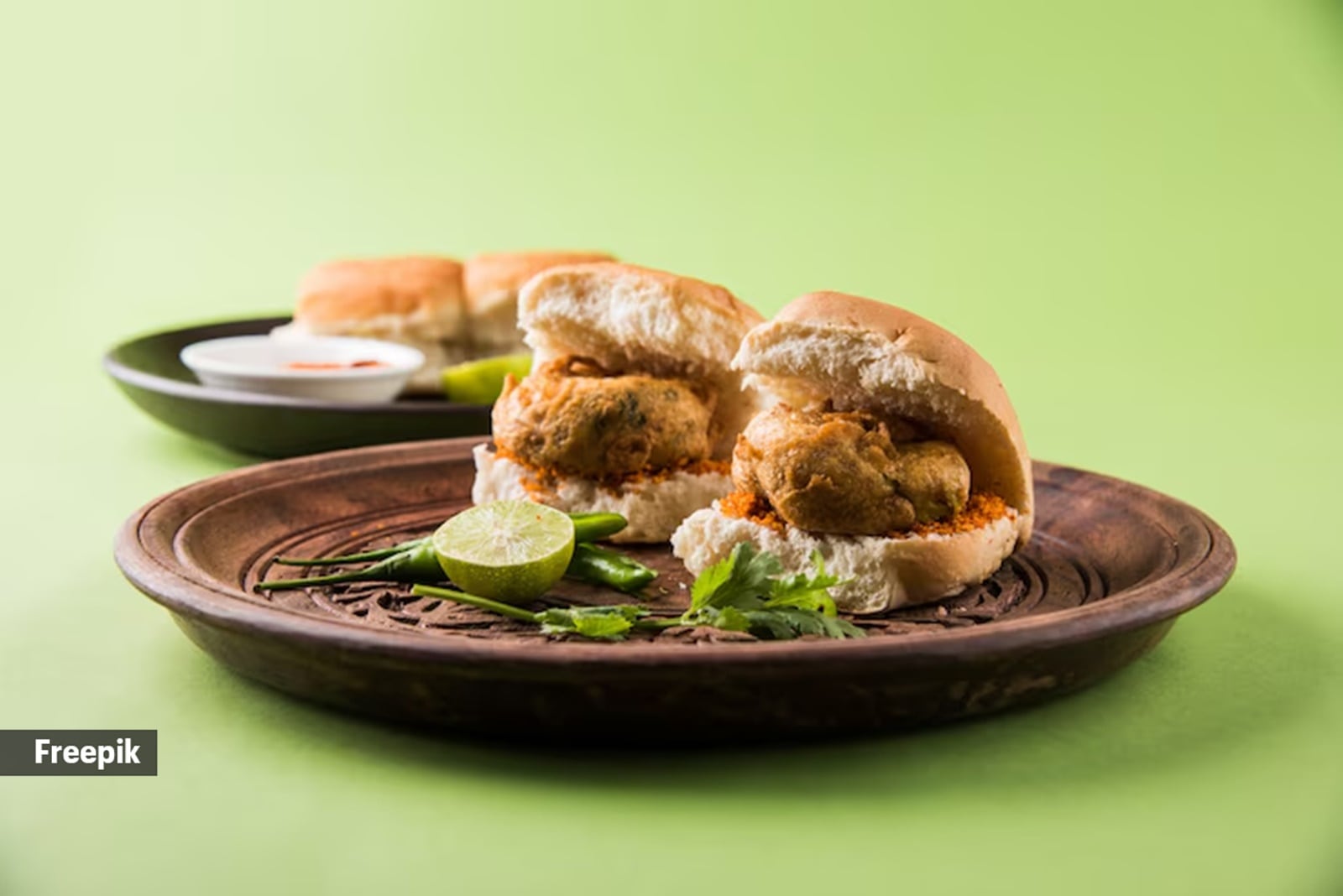📣 For more lifestyle news, click here to join our WhatsApp Channel and also follow us on Instagram
Tracing the roots of vada pav, ‘a snack that represents Mumbai’s spirit’
Vada pav—often hailed as the "Indian burger" cemented its global fame yet again by securing the 39th position on the World’s 50 Best Sandwiches list, curated by food and travel guide Taste Atlas.
 Explore the rich history of Mumbai's iconic street snack, Vada Pav. Learn how this "Indian burger" became a global sensation, ranking on the World’s 50 Best Sandwiches list, and its connection to politics and culture. (Source: Wikimedia Commons)
Explore the rich history of Mumbai's iconic street snack, Vada Pav. Learn how this "Indian burger" became a global sensation, ranking on the World’s 50 Best Sandwiches list, and its connection to politics and culture. (Source: Wikimedia Commons)In the bustling, ever-awake city of Mumbai, where the rhythms of life match the constant hum of trains, an unassuming snack has earned a place in the hearts of millions.
Vada pav—often hailed as the “Indian burger” cemented its global fame yet again by securing the 39th position on the World’s 50 Best Sandwiches list, curated by food and travel guide Taste Atlas.
View this post on Instagram
The origins of vada pav trace back to the 1960s, near Mumbai’s Dadar railway station, according to Tarveen Kaur, head chef and restaurant consultant.
Amidst the chaos of arriving and departing trains, a street vendor named Ashok Vaidya sought to create an inexpensive, portable meal for the city’s hardworking mill labourers. Drawing from local ingredients, he paired batata vada—a spiced, golden potato fritter—with pav, a fluffy bread roll introduced to India by the Portuguese. The result was a culinary revelation: an affordable snack that could be eaten on the go, packed with flavour and sustenance.
As Chef Kaur observes, “vada pav is the essence of Mumbai—a dish born of necessity but elevated by innovation. Its simple ingredients belie its complex cultural significance.”
The Shiv Sena and the rise of a symbol
In the 1970s, vada pav gained an unexpected champion in the Shiv Sena, a Marathi-Hindu nationalist political party. Recognising the snack’s mass appeal, they began promoting it as the quintessential working-class food, deeply rooted in Marathi culture, according to chef and historian Sadaf Hussain. “It became the working man’s lunchbox, especially for the blue-collar crowd navigating the chaos of Bombay.”
Here’s where it gets really layered. Over time, the Shiv Sena started using it as a political identity marker, Hussain explains, “sort of a way to draw a line between Maharashtrian pride and outsider influences.”
He added: “In fact, it was almost positioned against Udupi joints run by South Indians, even though both were part of the same cityscape.”
 Vada Pav epitomises Mumbai’s melting-pot nature, where people from different walks of life converge in a densely populated area (Source: Freepik)
Vada Pav epitomises Mumbai’s melting-pot nature, where people from different walks of life converge in a densely populated area (Source: Freepik)
Harris Soloman, a cultural anthropology professor from Duke University, also supported this in his paper on Mumbai’s urban street food politics: “A friend explained to me that in the 1960s, some Shiv Sena protest signs read ‘Idli dosa bagao’ [Stop idli and dosa], referencing the two iconic snack foods of Tamil Nadu, as Senaiks attacked South Indian Udipi restaurants because the party founder, Bal Thackeray, accused South Indians of taking jobs that ‘rightly’ belonged to the Marathi manoos.”
A global icon with local roots
Despite its complex past, vada pav continues to thrive, transcending boundaries of class and geography. It secured the 39th spot on the World’s 50 Best Sandwiches list this year, proof of universal appeal. Found everywhere from railway stations to fine dining restaurants, vada pav remains deeply tied to its roots. Vendors elevate the dish with accompaniments like coconut-garlic chutney, tamarind sauce, and fried chilies, while upscale versions experiment with cheese and fusion flavors.
Yet, as Chef Kaur notes, “Even with all the reinventions, the essence of vada pav remains the same—a snack that represents Mumbai’s spirit: quick, bold, and unforgettable.”
Whether viewed as a culinary triumph, a political symbol, or a nostalgic comfort food, vada pav embodies the city’s unique ability to adapt, transform, and thrive. Love it or critique its legacy, it is more than just a snack—it is Mumbai in a bun.
📣 For more lifestyle news, click here to join our WhatsApp Channel and also follow us on Instagram
Photos


- 01
- 02
- 03
- 04
- 05
























